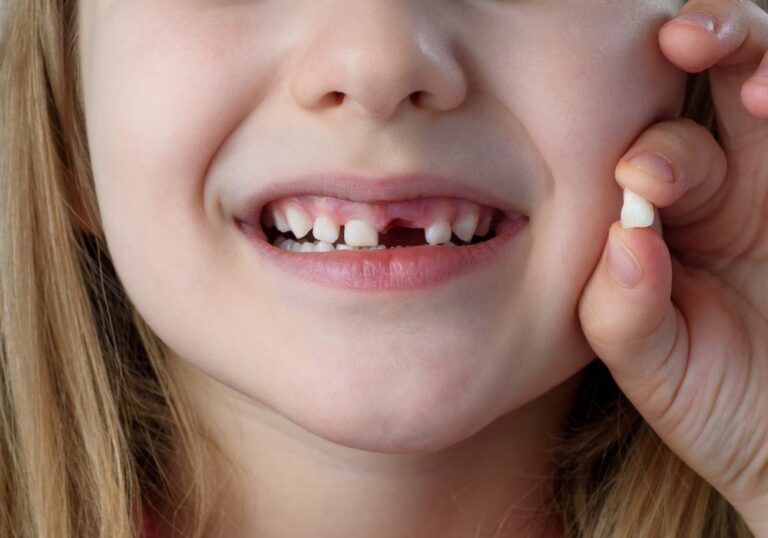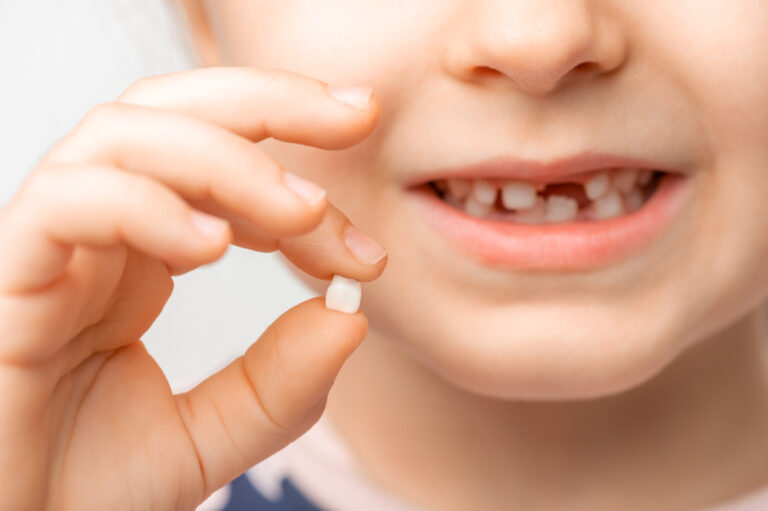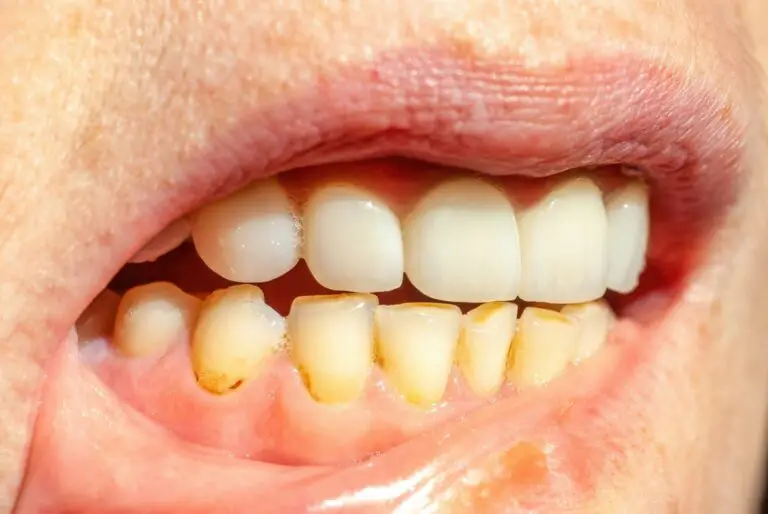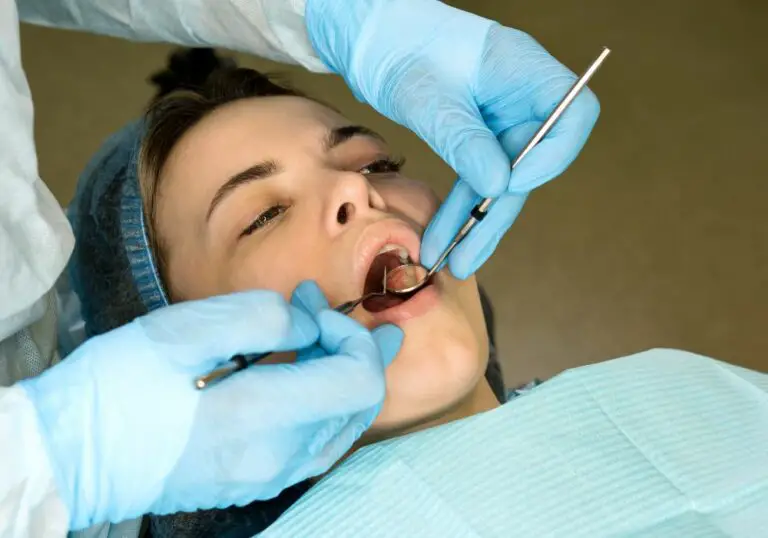Tooth fractures can seem like a dental emergency. However, even significantly damaged teeth often have good prospects for repair and restoration. While traumatic tooth injuries may appear hopeless, modern dentistry offers many advanced techniques to fix cracked, broken, or fractured teeth.
With prompt diagnosis and appropriate treatment, the survival and function of fractured teeth can frequently be maintained long-term. This article provides an in-depth look at the causes, diagnosis, and both temporary and permanent repair options for broken teeth.
What leads to tooth fractures?
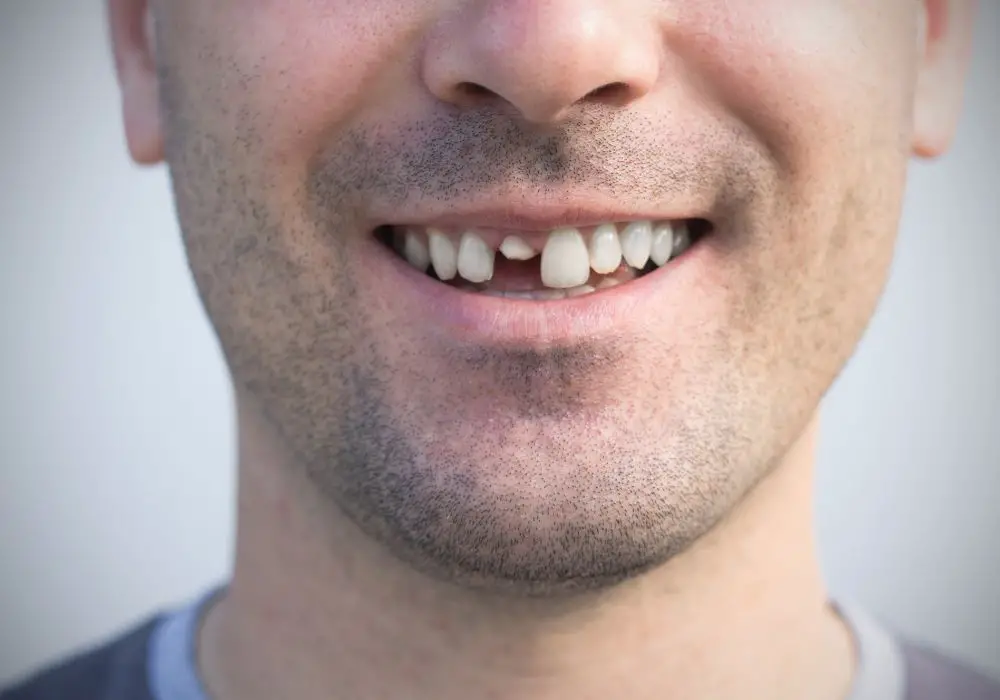
Teeth are surprisingly strong considering what they undergo on a daily basis. But they can still crack and break from various causes. Tooth fractures generally fall into these categories:
Trauma
Sudden traumatic blows to the mouth from falls, collisions, and sports injuries are a prime cause of tooth fractures, especially in children. The impact can easily crack the enamel or detach large pieces. Maxillary central incisors are most often affected. Fractures from trauma can range from minor enamel chips to severe cracks extending below the gum line.
Fatigue
Chewing forces repetitive stress on teeth over time. In some cases, this gradual fatigue leads to fractured cusps or cracked tooth syndrome. Grinding and clenching magnifies these stresses. Previous large fillings also create weak spots more vulnerable to fracture.
Tooth Decay
Extensive untreated decay compromises the integrity of the tooth structure. Cavities that progress into the inner dentin layer undermine the enamel surface. Decayed teeth then readily crack from normal biting forces. The decay essentially causes mechanical failure of the tooth.
Restorative Issues
Heavily filled, crowned, or veneered teeth may develop cracks later on. The additional dental work can create areas of weakness in the underlying tooth. Mechanical or bonding failures of old restorations also predispose them to cracking.
Other Factors
- Age – Teeth tend to become more brittle with age as they lose moisture content.
- Clenching/grinding – Habitual grinding puts extreme pressure on teeth.
- Missing teeth – Gaps in the arch disrupt biting forces and overload remaining teeth.
- Parafunctional habits – Chewing pens, nails, ice or other hard objects can crack teeth.
- Medical conditions – Conditions that reduce saliva flow increase caries risk. Some conditions also calcify enamel and make it more crack-prone.
How do broken teeth typically fracture?
Not all cracked teeth fracture in the same manner. Here are common fracture types by location and patterns:
Fractures of tooth crowns
These fractures involve the visible part of the tooth above the gum line. They can range from minor chipping to severe splits.
- Cracked cusp – Just a cusp tip corner breaks off, usually from fatigue or decay. Does not extend to pulp.
- Cusp fracture – A cusp split vertically down into underlying dentin but not the pulp chamber.
- Split tooth – Vertical crack from chewing surface down toward root, frequently into pulp. Major splitting of tooth segments.
- Hairline crack – Thin crack confined to enamel. May cause pain from debris entering crack.
Fractures of tooth roots
These invisible fractures occur under the gums and into the roots anchoring the tooth. They often lead to tooth loss if not treated.
- Vertical root fracture – A complete or incomplete crack extending lengthwise down the root. Major fracture often requires extraction.
- Horizontal root fracture – Fracture line transverse across the root. The coronal segment may be salvageable.
- Hairline root fractures – Minor cracks in root dentin. Difficult to detect but may become bigger over time.
Fractures of enamel and dentin
These fractures penetrate deeper than the outer enamel layer:
- Chipped tooth – Loss of an enamel fragment exposing underlying dentin. May occur alone or with other fractures.
- Cracked tooth – Fracture into dentin layer and possibly pulp but not discernible from the surface. Causes temperature sensitivity.
- Craze lines – Barely visible surface cracks in enamel that don’t extend into dentin.
Signs and symptoms of broken teeth
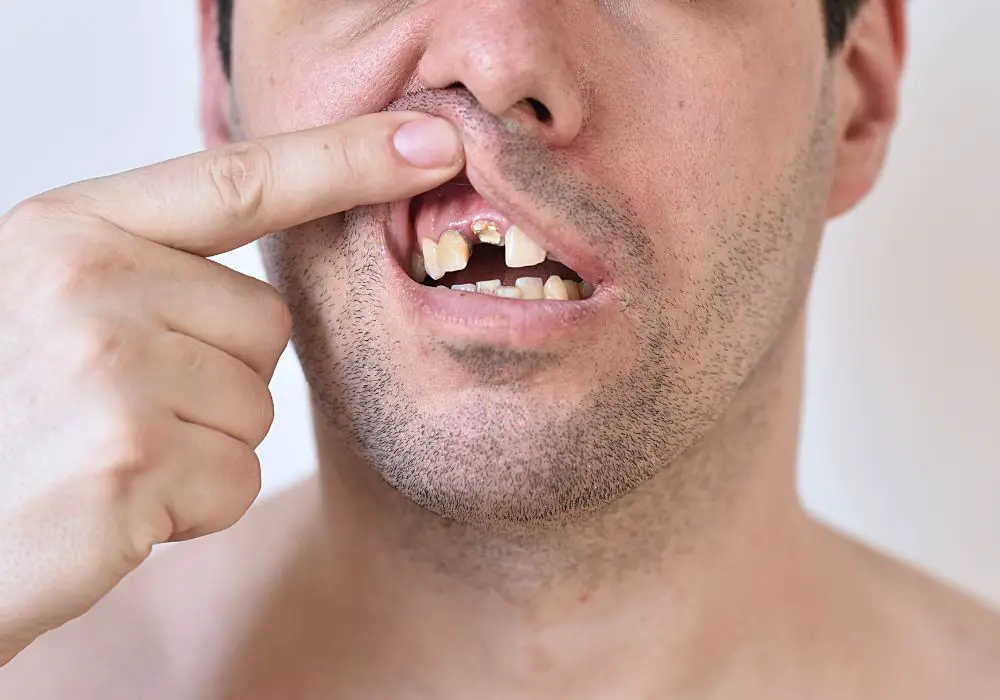
Some common signs of possible tooth fractures include:
- Visible chips or cracks – Look carefully over all tooth surfaces for any apparent enamel defects. Use a mirror to check the back teeth. Even hairline cracks warrant evaluation.
- Tooth or gum pain – Pain from hot, cold, or sweet stimuli is a hallmark symptom of a fractured tooth. The inner pulp nerve may become irritated. Spontaneous pain can also occur.
- Biting discomfort – A cracked cusp or surface makes chewing uncomfortable. Biting pressure tends to hurt the damaged area.
- Tooth sensitivity – A fracture exposing dentin can make the tooth extremely sensitive, especially to temperature changes. The loss of enamel insulation causes sharp pain.
- Tooth discoloration – Fractures allow stains to penetrate the tooth layers and cause discoloration. The tooth may turn dark at the crack line.
- Swollen gums – Fractures at or below gum level can allow bacteria to enter and cause infection and swelling. Gum inflammation indicates a problem.
- Halitosis – Bad breath or foul taste develops due to infected tissue debris entering the mouth through the fracture.
- Loose tooth segments – Complete splits can make pieces of the tooth mobile and detached. This requires urgent care.
- Abnormal bite – A fractured cusp alters the bite contact. Biting no longer feels balanced and even.
Any of these warrants a dental exam. Early diagnosis of fractures is key to saving the tooth.
Risk factors for tooth fractures
A number of factors can increase risk for cracked, broken, or fractured teeth:
- Clenching or grinding teeth – This puts tremendous force on teeth and can cause fractures over time. Using a nightguard helps prevent this.
- Chewing on pens, ice, or hard objects – This abnormal habit can crack teeth with sheer biting force. Avoid chewing anything excessively hard.
- Sports injuries – Collisions and trauma to the face from sports often cause tooth fractures. Wearing a mouthguard during sports helps protect teeth.
- Large or old fillings – Extensive restorations create weak spots more prone to fracture under pressure. Old fillings also tend to fail over time.
- Previous dental work – Heavily restored, crowned, or veneered teeth have higher fracture rates later on due to underlying weakness.
- Missing teeth – Gaps from missing teeth allow more force on the remaining teeth during chewing. This overloads them and increases fracture risk.
- Bruxism – Habitual teeth grinding or clenching generates high stresses that can eventually crack teeth. Managing stress and anxiety can help reduce it.
- Age – Teeth tend to become more brittle and prone to cracking with age as enamel loses minerals over time.
Diagnosing cracked and broken teeth
Identifying the exact position and nature of the tooth fracture is crucial for successful treatment. Dentists use a combination of diagnostic tools and tests:
Visual and tactile examination
- Look over all tooth surfaces for any visible fractures, chips, or defects in the enamel. Use bright lighting and magnifying loupes.
- Feel over surfaces for roughness with an explorer tip to detect cracks. Mark their locations.
- Test teeth with light tapping to see if any have increased mobility or discomfort.
- Check for bite abnormalities and high points that indicate damaged cusps.
- Assess gums around teeth for swelling, redness, or sinus tracts from infections.
- Examine adjacent and opposing teeth for signs of damage or fracture too.
Dental radiographs
- Intraoral X-rays – Fracture lines often appear as radiolucent lines against the radiopaque tooth structure.
- Cone beam CT scans – 3D CT imaging provides detailed views of tooth fractures extending below the gum line or into roots.
- Occlusal films – Check the biting surfaces for fractures when symptoms originate from posterior teeth.
- Oblique angle films – Angled X-rays better detect vertical root and horizontal crown fractures.
Additional fracture tests
- Bite test – Have patient bite down on cotton swab or stick to isolate suspected fractured tooth.
- Transillumination – Shine light through the tooth to illuminate interior fractures not visible on surface.
- Stain test – Apply colored stain to tooth surface to highlight hairline enamel cracks.
- Cold stimulus – Use cold water or ice to test for sensitivity indicating dentin exposure.
- Percussion – Lightly tap the tooth to test for discomfort or mobility.
- Periodontal probing – Detect cracks extending below the gum line by probing depths around the tooth.
Thorough assessment and precise diagnosis guides the dentist toward the most appropriate treatment option for restoring the tooth fracture.
Categories of tooth fractures
Classifying the type of fracture by extent, orientation, and location helps determine proper treatment:
Enamel only fractures
These minor fractures involve just the hard outer enamel layer:
- Craze lines – Extremely faint cracks in enamel. Require no treatment.
- Crack – Partial crack in enamel not reaching dentin.
- Hairline fracture – Small fracture with depth confined to enamel. May cause some pain if debris enters crack.
Enamel and dentin fractures
These deeper fractures extend through enamel into the softer dentin:
- Chipped tooth – Loss of an enamel fragment with exposed dentin.
- Cuspal fracture – Crack from the cusp tip down into root but not pulp chamber.
- Cracked tooth – Fracture with no visible evidence on surface but into dentin layer. Causes sharp pain from temperature changes. Difficult to detect.
Complex fractures
These severe fractures may split the tooth vertically into the root and pulp chamber:
- Split tooth – Long vertical crown fracture from chewing surface down toward root.
- Vertical root fracture – Complete or incomplete crack extending lengthwise from the root tip upward. Often requires extraction.
Other fractures
- Horizontal root fracture – Fracture line transverse across width of the root.
- Alveolar bone fracture – The socket bone fractures along with the tooth. Requires stabilization.
- Hairline root fracture – Thin crack contained within the cementum or dentin of the root. Difficult to detect.
Correctly classifying the type of fracture is the first step toward damaged tooth repair and preservation of the natural tooth.
Temporary treatment for cracked or broken teeth
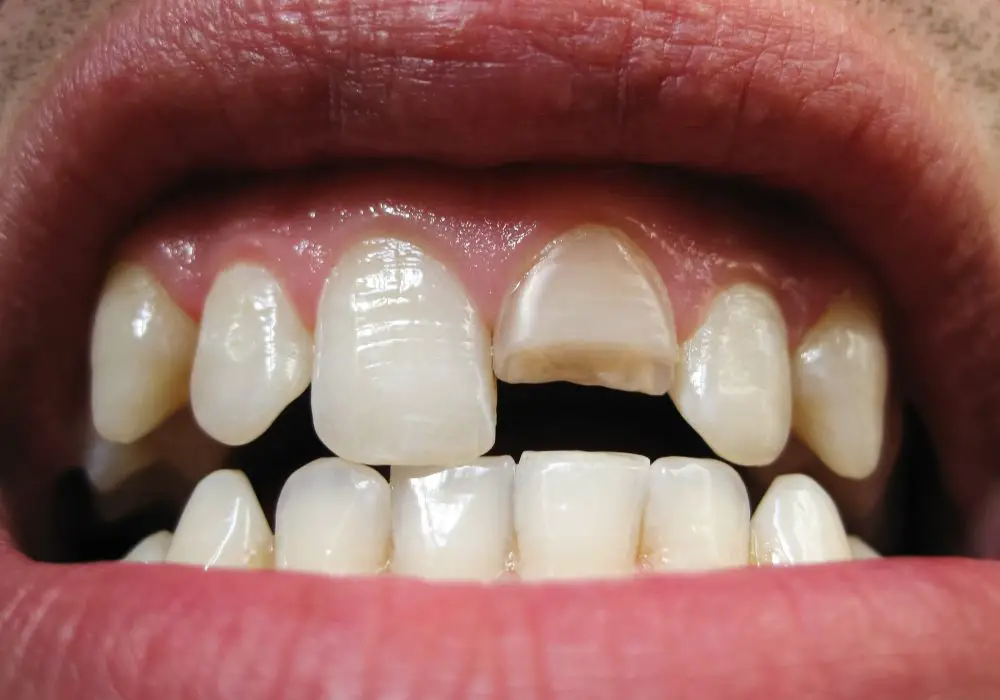
After diagnosis, initial stabilization and protection of the fractured tooth is important to prevent further damage:
Reduce chewing forces
- Avoid chewing on the damaged tooth. Stick to soft foods. Don’t bite into crunchy, sticky, or hard items.
- Modify the bite with adhesive resin or orthodontic wax to prevent contact on the fracture.
Stabilize loose segments
- Splint together detached pieces with wire, composite, or acid-etch bonding for stabilization.
- Smooth sharp edges that could cut cheeks and tongue.
Prevent debris entering cracks
- Use items like sugar-free chewing gum to keep food debris from entering hairline cracks and causing pain.
- The dentist can bond sealants over cracks to prevent material wedging inside.
Manage infection
- Disinfect and drain swelling from fractures that extend under the gums to relieve pressure.
- Prescribe antibiotics if bacterial infection is present in the root or surrounding bone.
Reduce pain
- Desensitizing toothpaste can provide relief from temperature sensitivity on exposed dentin.
- Dentist may coat exposed areas with resin agents like Gluma to seal and reduce pain.
- Prescribe anti-inflammatory pills to relieve discomfort from the fracture.
Monitor healing
- Schedule follow up visits to check that stabilization is working and no complications are developing.
- Take periodic radiographs to assess healing and bone health around the fracture site.
These temporary measures stabilize chips or cracked teeth until a permanent restorative solution is feasible. They help limit further damage in the short term.
Permanent treatment options for a cracked or broken tooth
Once the tooth is stable, one or more definitive treatments can restore form and function:
Dental bonding
- Composite resin material added to small defects and fractures confined to the enamel. Simple cost-effective restoration for minor chips.
Dental crowns
- Artificial crowns protect and hold together cracked teeth, especially when fractures extend toward the root. Preserve more of the natural tooth.
Root canal therapy
- If the pulp nerve tissue becomes infected, removal of the pulp and cleaning the canals may be necessary before crowns or other restorations.
Tooth extraction
- If the crack extends deep below the gum line or tooth lacks enough intact structure to restore, extraction may be the best option. The space can then be replaced with a bridge or implant.
Splinting
- Stabilize a loose tooth segment by adhering it with composite to the adjacent stable teeth. Wire splinting is also used.
Orthodontic treatment
- In some cases, realigning the bite with braces reduces biting forces on the cracked tooth during healing.
Restorative veneers or crowns
- If a cracked tooth cannot be restored outright, a full coverage crown or veneer can strengthen, protect, and improve appearance.
Endodontic microsurgery
- For a fracture invading the root that cannot be extracted, apical surgery may allow sealing and stabilizing the crack from the outer root surface and save the tooth.
With today’s technology and dental expertise, restoring badly cracked, fractured, and broken teeth is very often possible with a good long-term prognosis.
What affects the prognosis of a cracked tooth?
Many variables affect the outlook for keeping and repairing a cracked tooth:
Extent of fracture
- Size of the fracture – minor vs. major
- Orientation – vertical, horizontal, oblique, etc.
- Location – confined to crown vs. extending into root
- Involvement of pulp tissue – pulpal exposures have poorer prognosis
Timeliness of treatment
- How soon after fracture injured tooth is evaluated and treated
- Risk of infection spreading with lengthy delays
Amount of intact tooth remaining
- More remaining enamel and dentin provide better adhesion for restorations
- Less tooth structure limits restoration options
Occlusion evaluation
- Analyzing bite forces and patterns that contributed to cracking
- Ability to modify occlusion to prevent repeat damage
Patient dental history
- Factors like bruxism that likely caused fracture and may continue
- Patient compliance with protecting repaired tooth from re-fracture
Considering these factors helps determine tooth fracture repair methods and long-term outlook. With optimal conditions, most fractured teeth can be saved.
Success rates for fractured tooth repair
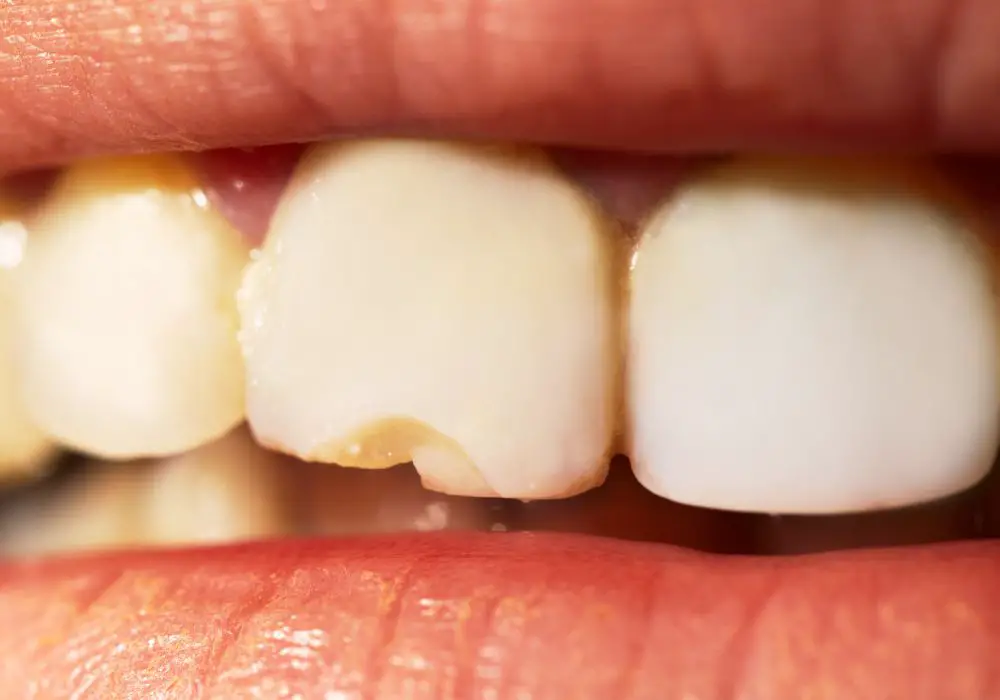
Clinical studies of various restoration methods report good success rates for fractured teeth:
- Dental bonding for minor enamel chips – 95% success rate after 10 years
- Cuspal coverage with crowns – 89% survival at 5 years
- Endodontic treatment and crowns – 85% success at 5 years
- Direct composite restoration – 82% survival at 4 years
- Root canal and dowel/core buildup – 80% success rate after 2 years
- Surgical treatment of longitudinal fractures – 77% success rate
Following dentist recommendations for protecting the repaired tooth is key to long-term success. But even severely damaged teeth often fare well with current treatment options.
Caring for repaired fractured teeth
Once a cracked or broken tooth is restored, diligent home care and regular dental visits can help ensure longevity:
- Use a soft toothbrush and brush gently – Take care not to damage repaired areas.
- Avoid chewing ice, nuts, and hard foods – Stick with soft foods during initial healing.
- Wear a custom nightguard if you grind teeth to prevent excessive forces on repaired tooth.
- Quit smoking – Tobacco stains teeth, increases decay and fracture risks.
- Floss carefully – Pull floss through sides of the tooth, not up and down over bonded cracks.
- Rinse with fluoride mouthwash daily – Fluoride strengthens enamel to prevent future cracks.
- See your dentist regularly – Get exams and x-rays to check for damage to restorations.
- Get restorations replaced when they show wear, damage, or new cracks around their margins. Don’t wait for them to fail.
- Use toothpaste for sensitive teeth – These contain compounds to reduce sensitivity if underlying dentin is exposed.
With proper home care and avoidance of damaging habits, repaired cracked teeth can function normally long term. Regular dental cleanings and checkups ensure longevity of restorations.
Broken Tooth FAQ
Here are answers to some frequently asked questions about cracked and broken teeth:
Can a cracked tooth heal itself?
No, a cracked or fractured tooth will not heal on its own. The inner pulp and dentin tissue cannot regenerate or mend together without treatment. Getting a prompt dental exam is important to save the tooth.
How long can you leave a broken tooth before fixing?
You should see a dentist immediately if you suspect a tooth fracture. Leaving it longer than a few days risks infection spreading into the root which can cause tooth loss. Quick action leads to the best outcome.
Is it better to extract or save a broken tooth?
Saving the natural tooth is usually preferable if the fracture is repairable. A restored tooth can have a good long-term prognosis. Implants and bridges to replace extracted teeth are more invasive and costly.
Can you repair a tooth cracked down to the root?
It depends on the location and extent of the fracture. Vertical root cracks are trickier but possible to treat with endodontic surgery and stabilizing the coronal section. Prognosis depends on how much natural tooth remains.
How much does it cost to fix a broken tooth?
Cost varies based on treatment needed. Simple enamel chipping might be $200-$600 while a root canal and crown for a vertical fracture could be $1000-$2000. More complex repairs like surgery or dental implants are over $2000. Insurance can offset some of the cost.
Conclusion
Seemingly catastrophic tooth fractures are often repairable with modern dental techniques. Even chips, cracks, and breaks down to the root can frequently be restored to normal function. The key is getting an accurate diagnosis and prompt treatment before additional damage occurs. With the right restoration and committed home care, broken teeth can be stabilized and protected for the long term.

